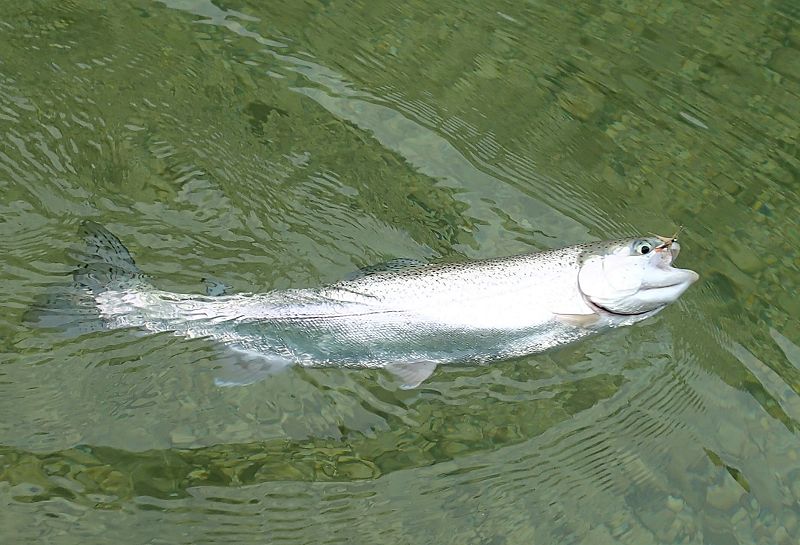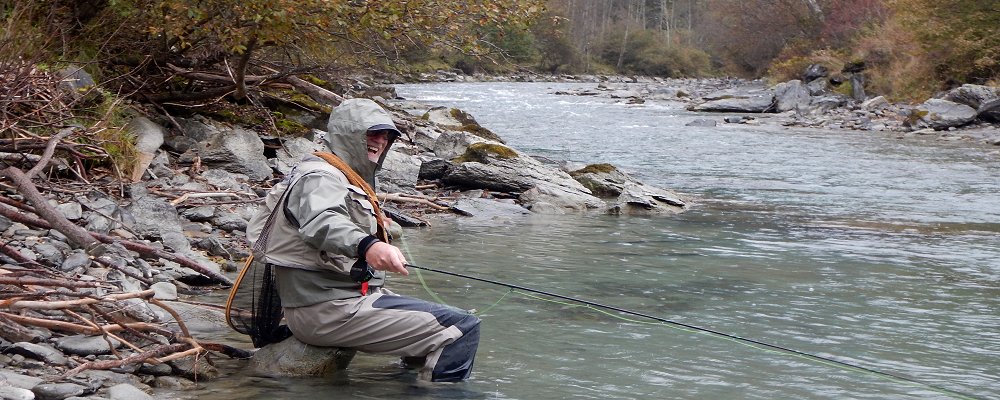The brown trout
The brown trout (Salmo Truta Fario) is the native fish par excellence in the Vosges Massif and Piedmont, where most of the rivers in Alsace flow.
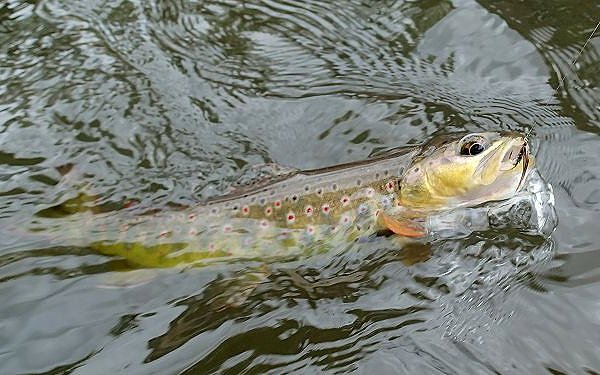
Still well present in the upstream part of the alsatian rivers, the future of the trout is nevertheless quite uncertain, in Alsace as in all the European regions of average altitude. Populations are in fact threatened with extinction because of a multitude of dangers: accidental or (and) chronic pollution, predation of cormorants and other more or less natural predators, climate warming leading to a decrease in Oxygen dissolved in water, an essential parameter in the survival of the species, decreased caches (river and stream recalibration), food competition related to the decline in natural food, particularly Insects (insecticides, pesticides)
Already since the years 2000 it is obvious that only upstream streams, to simplify portions above 400 meters above sea level, still contain a more or less natural population of brown trouts in alsatian streams. Even on the Schirmeck no-kill course, located at 350 m above sea level, the chub come to mingle with the population of trout, however consistent. On the occasion of an electric fishery carried out in 2003 on the no-kill course of Muhlbach on Bruche, the fishing federation had already shown that the biomass was more important in white fish (chub, daces and barbers) than in brown trout.
Breeding of the species continues, between December and February, upstream of most of the basin head streams. Although sometimes anarchic rearing has disconsolate the wild strain, efforts have been made for several years by the departmental federation and the Basin Management Committee to safeguard the natural strains. Thus the Federation of Bas-Rhin has set up since the years 2005 a plan of reintroduction of brown trout from the so-called Baerembach strain, the name of a creek of the northern Vosges whose genomes appeared to be the least polluted by the trout rearing from Numerous European farms with various but rarely alsatian strains.
If, at the end of the twentieth century, the fishintroducing was practised, it must be recognized, in an anarchic manner, the establishment of the basin committees and the professionalisation of the fishing federations currently allows to honour most often in Alsace a patrimonial management, whose effects, in natural quality of trout, is already felt in many alsatian rivers, such as the Doller, the Thur, the Bruche, the Mossig, the Fecht, or even the lauter.
In Alsace you will sometimes find very large trout in the old Rhine or the Rhine floodway canal, which regularly hosts large trouts, including reformed spawners of the federal fish farm in Obenheim. Elsewhere, the size average of the brown trout is not very important, the alsatian rivers being sandstone or granitic rather than limestone, but their fighting and vivacity will delight you.
Brown trout is an omnivorous and highly opportunistic fish for its food. It is on the other hand a suspicious nature and does not allow itself to be easily approached. Sunny days are generally less good for fishing than covered and rainy days, as the brownie is is lucifuge.
If there are many fishing techniques for trout, it is flyfishing that is certainly the most exciting. It is also the most regularly sought-after species of fly fishermen. It allows the practice of all our techniques, because it occasionally comes to rise on the surface to take a dry fly, will be tempted by a nymph drifting over the current, fetch angrily a streamer nervously stripped or even pick a wet fly passing to her Range, in the frenzy of a spring hatch.
In view of the threats evoked previously that affect the populations of brown trout, I invite each responsible flyfisherman to take the minimum of these fish and to increase in personal capacity the minimum size of catch, often officially to 23 or 25cm, still far too low to allow the most beautiful spawners to perpetuate the species.
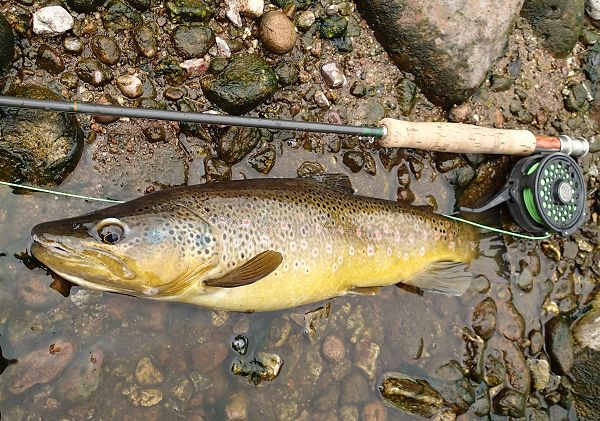
Rainbow trout
Rainbow trout (Onchorynchus Mykiss) is not a native fish in Alsace. However, its location has been very real for about fifty years.
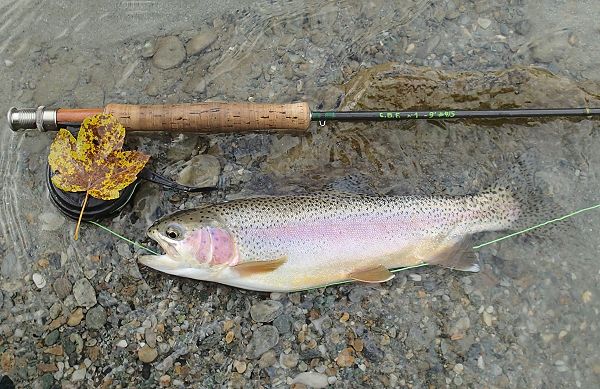
It is obviously very present in pond, lake or reservoir, like the stork reservoir in Seltz, where the larger specimens allow fly fishermen to capture a trophy fish.
Rainbow trout are also found in most of the upper lakes of the alsatian Vosges, such as the trout lake (or Forlet) where they often coexist with the brown trout.
But it is also present in our rivers. Rainbow trout, known as “portion trout”, have long been dispatched for the opening of trout fishing in 1 ° category, and it is still so in some fishing associations. Some survivors of the high fishing pressure of the first days of the opening are occasionally able to adapt to their new environment for long months or even years, and then offer us a pleasant sport fishing.
Breeding fingerlings of higher quality strains have also occasionally been set in several alsatian rivers and very beautiful fish have thus managed to acclimatize on certain specific posts of these rivers. I still remember the capture in 2012, of a very beautiful rainbow trout, visibly becoming wild, who had taken my little nymph on the no-kill course of Muhlbach on Bruche.
Less demanding on the level of dissolved oxygen in water than its European cousin, rainbow trout of American origin is also an omnivorous and opportunistic fish. Because it is more regularly active to feed than borwn trout, which spends many hours in its cache, rainbow trout is particularly interesting for the fly fisherman.
Just as with the brown trout, and contrary to what many fishermen advocate, I think it’s good to release the rainbow trout under 30 cm that you could catch in the river. Because if the big rainbow can be predatory small brown trout, this is not the case of the smallest and these fish offer a nice sport fishing.
